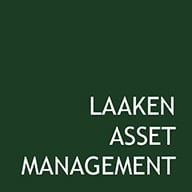Segments
Broadridge generates revenue from two segments:
- Investor Communications (75% of operating income): The US securities regulator requires companies and investment funds to ask their shareholders each year to vote on important agenda items and to provide them with periodic information. These parties do not know who their shareholders are. The only way to communicate with their shareholders is through brokers, who outsource this to Broadridge. Broadridge handles the communication and voting process of more than 80% of all US stocks and counts 95% of brokers as its customers. Broadridge earns a fee for every communication they send.
- Global Technology and Operations (25% of operating income): Broadridge assists banks in automating their back office processes, including administrative tasks associated with processing equity and fixed income transactions. Broadridge counts 24 of the 25 largest global banks as its customers. They handle respectively 30% and 60% of all equity and fixed income transactions in the United States. The contracts with their customers are multi-year in length generating largely recurring revenues.
Valuation
Broadridge expects 5-7% organic sales growth for both segments. In the Investor Communications segment, growth comes from the increasing number of individual positions in equities and funds. The financial markets are becoming increasingly accessible to new investors with falling trading commissions and the rise of affordable robo-advisors. This leads to a higher number of shareholders and therefore more communication flows. In the Global Technology and Operations segment, growth comes from banks outsourcing more and more administrative tasks, offering new services and growing trading volumes. Through continuous margin improvement, this results in an organic earnings growth of 7-10%. Broadridge requires little capital to achieve this growth, and converts 100% of profits into free cash flow. They use this to make acquisitions, buy back shares and pay dividends. This brings the total expected return to 12-15% per year.
Next to the strong growth prospects, we are attracted to the company’s resilience. A majority of their revenues does not depend on the economic cycle. Historically, the number of equity and fund positions held does not decrease in a recession. In addition, Broadridge reports a retention rate of 98%. This means that 98% of customers will still be customers in the following year. Broadridge trades at 21x expected earnings of 2023. We believe this is an attractive valuation for a company with such prospects, dominant market positions and a defensive profile.
Risks
Broadridge operates in a regulated industry. The Securities and Exchange Commission (SEC) oversees the industry and sets the rates Broadridge can charge in the communications segment. This carries the risk that regulation, in the form of reduced fees, could have a negative impact. We consider this risk low. The SEC strives to promote market transparency and protect investor rights. Broadridge enables this by providing investors with information and granting them a voice in a company’s decisions. They proved to do this accurately and reliably. The SEC conducted multiple studies into Broadridge and concluded that they are critical to the functioning of the markets and that they do not charge excessive commissions.
ESG
Broadridge’s digitization initiatives in the communications segment eliminated more than 80% of paper communications. This saved the industry $2.6 billion in costs and significantly reduced paper usage and transportation emissions. In addition, the company has 2025 targets in place to reduce their own emissions.







